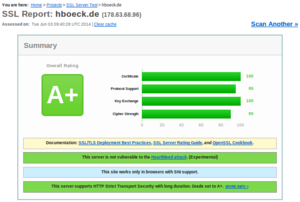Entries tagged as rss
blog bblog blogdieb cacert duden etymologie feed fun geschlecht hackergotchi hacking harvester karlsruhe kubik lawblog planet recht rechtsanwalt s9y security serendipity simplesharingextensions sprache tippfehler udovetter web20 webmontag webpage websecurity xss browser ajax certificate clickjacking content-security-policy cryptography csp dell edellroot encryption firefox html https javascript khtml konqueror maninthemiddle microsoft php sni ssl superfish tls vulnerability webcore aead aes aok apache berserk bleichenbacher braunschweig bsideshn ca ccc certificates cfb chrome cms datenschutz easterhegg email gajim gnupg gpg hannover jabber joomla key letsencrypt nginx nss ocsp ocspstapling openssl otr owncloud pgp poodle privacy revocation schlüssel sha1 sha2 talk update verschlüsselung x509 xmpp adguard android antivirus breach cloudflare cookies crime crypto csrf facebook freak hash heist http kaspersky komodia mitm netfiltersdk privdog protocolfilters samesite sha256 time transvalid updates web windowsxp creativecommons earth fdl license mars openstreetmap python stadtmitte 0days 27c3 addresssanitizer adobe afra aiglx algorithm altushost antivir apt asan auskunftsanspruch axfr azure badkeys barcamp bash berlin bias bigbluebutton bodensee botnetz bsi bufferoverflow bugbounty bundesdatenschutzgesetz bundestrojaner bundesverfassungsgericht busby bypass c cbc cccamp11 cellular chcounter chromium clamav clang cmi code compiz conflictofinterest cookie crash cve darmstadt deb debian deolalikar diffiehellman dingens diploma diplomarbeit distributions dns domain drupal eff english eplus fedora fileexfiltration firewall fortigate fortinet forwardsecrecy freesoftware freewvs frequency fsfe ftp fuzzing gallery gcc gentoo ghost gimp git glibc gnutls gobi google gsm gsoc gstreamer hackerone heartbleed helma infoleak informationdisclosure internetscan ircbot itsecurity jodconverter keyexchange leak lessig libreoffice linux luckythirteen malware mantis math md5 memorysafety mephisto milleniumproblems mobilephones modulobias moodle mozilla mpaa mplayer mrmcd mrmcd100b mrmcd101b multimedia mysql napster nessus newspaper nist ntp ntpd observatory onlinedurchsuchung openbsc openbts openid openidconnect openleaks openpgp openvas osmocombb packagemanagement padding panda papierlos password passwordalert passwort passwörter pdo phishing pnp privatekey provablesecurity pss rand random rc2 redhat rhein rpm rsa rsapss salinecourier science server session sha512 shellbot shellshock sicherheit signatures slides smime snallygaster sniffing spam sqlinjection squirrelmail sso staatsanwaltschaft stacktrace study stuttgart subdomain sunras support taz thesis tlsdate toendacms überwachung ubuntu unicef unicode useafterfree userdir utf-8 virus vlc vortrag vulnerabilities webapps wiesbaden windows wiretapping wordpress xgl xine xsa zerodays zugangsdaten zzuf calendar cccamp cccamp15 certificateauthority ipv6 libressl openbsd symantec
 I recently switched my personal web page and my blog to deliver content exclusively encrypted via HTTPS. I want to take this opportunity to give some facts about enabling TLS encryption by default and problems you may face.
I recently switched my personal web page and my blog to deliver content exclusively encrypted via HTTPS. I want to take this opportunity to give some facts about enabling TLS encryption by default and problems you may face.